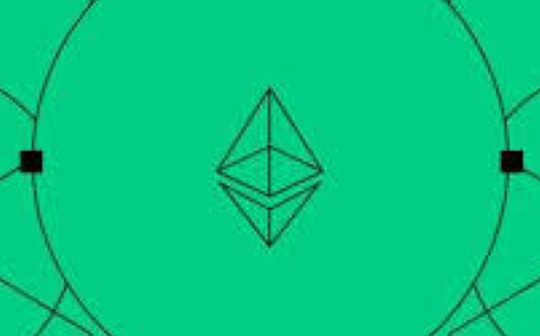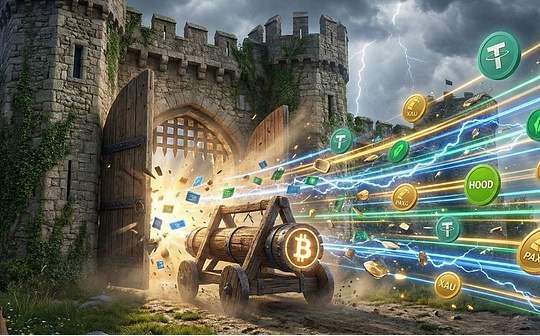
Author: Vitalik, founder of Ethereum; compiled by: 0xjs@Bitchain Vision
One of the most important social challenges in the Ethereum ecosystem is balance (or more precisely integrated) decentralization and collaboration.
The advantage of the ecosystem is that there are a wide variety of people and organizations—client teams, researchers, L2 teams, application developers, local community groups—all moving towards their vision for Ethereum.The main challenge is to make sure all of these projects work together to build something that feels like an Ethereum ecosystem, rather than 138 incompatible feudal territories.
To solve this challenge,Many people in the Ethereum ecosystem have proposed the concept of “Ethereum alignment”.This can include value alignment (e.g. open source, minimize centralization, support for public products), technical alignment (e.g. collaboration with ecosystem-wide standards) and economic alignment (e.g. using ETH as tokens where possible).However,The concept is historically unclear, which creates the risk of being captured on the social layer: If alignment means having the right friends, then “alignment” as a concept fails.
To solve this problem, I think the concept of alignment should be made clearer and broken down into specific properties that can be represented by specific metrics.Everyone’s list will be different, and the indicators will inevitably change over time.However, I think we have some solid starting points.

Open source
Its value lies in two aspects: (i) codes can be checked for security, and more importantly (ii) reduce the risk of proprietary lockouts and enable third-party improvements without permission.Not every part of every application needs to be fully open source, but that should definitely be the core infrastructure components that the ecosystem depends on.The gold standard here is FSF free software definition and OSI open source definition.
Open Standards
Efforts to achieve interoperability with the Ethereum ecosystem and build them based on open standards, including existing standards (such as ERC-20, ERC-1271, etc.), as well as standards under development (such as account abstraction, cross-L2 transmission,L1 and L2 light client proof, upcoming address format standards).If you want to introduce new features that existing standards cannot meet well, work with others to write a new ERC.Applications and wallets can be rated based on which ERCs they are compatible with.
Decentralization and security
Avoid trust points, minimize review vulnerabilities, and minimize dependence on centralized infrastructure.Natural metrics are (i) walk away tests: if your team and server disappear tomorrow, whether your application is still available, and (ii) internal attack tests: if your team itself tries to attack the system, how much damage will it cause, youHow much damage can it cause?An important formalization is the L2beat Rollup stage.
Zhenghe
For Ethereum——The success of the project should benefit the entire Ethereum community (such as ETH holders, Ethereum users), even if they are not part of the project’s own ecosystem.Specific examples include the use of ETH as a token (and thus promotes its network effects), contributions to open source technologies, and the commitment to donate a percentage of tokens or revenue to public products within the Ethereum ecosystem.
For a broader world——Ethereum aims to make the world more free and open, achieve new forms of ownership and collaboration, and make positive contributions to the important challenges facing mankind.Have you done your project?Examples include applications that bring sustainable value to a wider audience (e.g. financial inclusion), donation to public products outside Ethereum, and building practical technologies that go beyond encryption (e.g. financing mechanisms, general computer security) that areActually used in these cases.

Ethereum node graph, source ethernodes.org
Obviously, the above does not apply to every project.Metrics for L2, wallets, decentralized social media applications, etc. all look very different.The priorities of different indicators may also change: two years ago it was acceptable for Rollup to have a “support wheel” because it was still in the “early stage” at the time; today, we need to enter at least the first stage as soon as possible.Today, the clearest indicator of Zhenghe is the commitment to donate a certain percentage of tokens, and more and more projects are doing so; tomorrow we can find indicators so that other aspects of the positive effect can be understood.
My ideal goal is that we see more entities like L2beat appearing to track the extent to which individual projects meet the above criteria and other criteria proposed by the community.Projects do not compete for having the right friends, but rather compete to be consistent as clearly and easily understood standards as possible.The Ethereum Foundation should distance itself from most of these projects: We fund L2beat, but we shouldn’t be L2beat.Building the next L2beat is itself a license-free process.
This will also provide a clearer path to the Ethereum Foundation and other organizations (and individuals) interested in supporting and participating in the ecosystem while remaining neutral, to determine which projects to support and use.Every organization and individual can judge for themselves the criteria they care most and select projects based on which projects best meet these criteria.This makes it easier for the Ethereum Foundation and everyone else to be a more consistent part of the incentive program.
Only when merit is defined can you become an elite ruler; otherwise, you have a (probably exclusive and negative) social game.The best way to address the concerns of “who is monitoring the monitor” is not to go all out, trying to make sure that every influential person is an angel, but to pass time-tested techniques such as separation of powers.”Dashboard organization” like L2beat, block browsers, and other ecosystem monitors are excellent examples of this principle playing a role in today’s Ethereum ecosystem.
If we do more work to make different aspects of alignment clear and understandable, rather than focusing on a “monitor”, we can make the concept more effective, fair and inclusive, as the Ethereum ecosystem strives to achieve.








